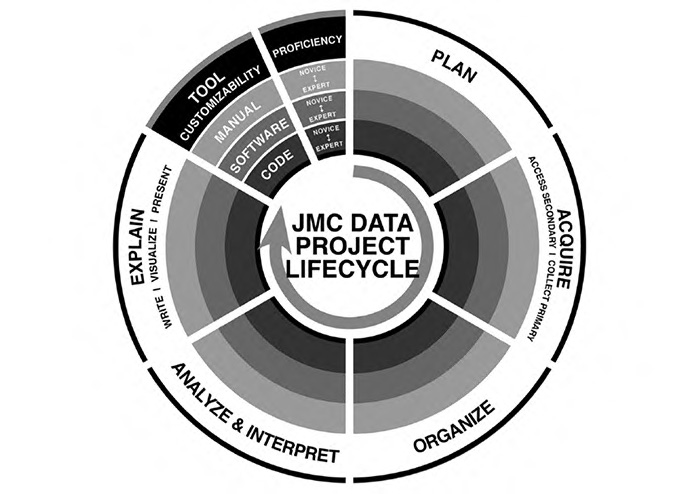Study: 'Spreadsheet wherewithal,' life cycle of data key to preparing journalists, communicators
LAWRENCE — In the age of big data, information is everywhere. But it takes a skilled data interpreter and communicator to help people understand what information means and why it is important. To help ensure future journalists and communicators know how to find, make sense of and share data — and counter misinformation — two University of Kansas researchers have proposed a “data project life cycle” approach to preparing students.

Peter Bobkowski, Clyde M. Reed Professor of Journalism, and Christopher Etheridge, assistant professor of journalism & mass communications, conducted a study in which they interviewed 24 professionals in journalism and strategic communications about what kind of data skills students need to succeed in the disciplines. The findings show data literacy should guide efforts, and the authors present a model for instructors to ensure students have the necessary skills, such as what they call “spreadsheet wherewithal.” The piece was published in the journal Science Communication.
“The reality is for a lot of programs, the sub-fields like advertising, public relations, science communication and other areas are in classes together with journalism students,” Etheridge said. “Our premise is to take what data journalism is and apply it across disciplines, and then look at how we can help students apply those skills in the field.”
In science communication or in a project such as reporting on a school district’s budget, practitioners need to be able to look at numbers and tell an audience what they mean. The same is true for strategic communications disciplines, and the authors proposed a “data project life cycle” for educators to equip students with those skills. The model advances the idea that not every storyteller will be a computer coder, but all communicators need to be comfortable looking at data and pulling out the important information, or spreadsheet wherewithal. Educators should design courses that teach students to plan, then acquire, organize, analyze and interpret data in simple spreadsheets, then develop strategies to explain the data through text, audio, images and graphics. The “life cycle” approach is common in statistics but could be beneficial for communicators as well.
“Our research underscores the benefit of walking students through an entire data project cycle so that they establish connections between collecting data, arranging it in a dataset, analyzing it and communicating it,” Bobkowski said. “This is something statistics educators have emphasized for years. Perhaps our paper can prompt more instructors to consider the entirety of the data project cycle as they design data learning experiences for their students.”
The data project life cycle was developed based both on academic literature and input from professional journalists and communicators. The latter — people working in fields as diverse as public relations, marketing and strategic communications — told the researchers about the specific skills and levels of expertise graduates entering the field should have. Top among the skills discussed is spreadsheet wherewithal, or the ability to navigate features and components of spreadsheet software and how information therein can be analyzed and organized to yield useful results.
Practitioners also expressed the importance of software over coding, noting it was more important to have familiarity with commonly used programs than a knowledge of coding. Humanizing data and being able to tell a story with information was also high on the list, along with the importance of being able to relay it to both external and internal audiences. Finally, respondents indicated journalists and mass communicators need to know how and when to visualize data, or what programs to use to make visual presentations of data, and that they should possess a drive for lifelong and self-directed learning. In essence, being able to share data in an understandable way is as important as knowing where and how to find it.
“We wanted to ask people in the field if the things we were thinking of matched what they are looking for and how intensely these data skills are involved,” Etheridge said. “Our conversations with practitioners confirmed the data life cycle approach makes a lot of sense. The top line is that people who are hiring want spreadsheet wherewithal.”
While the importance of knowing how to use technologies to interpret data and relate it in understandable ways is vital for journalists and mass communicators, the authors wrote that those training future professionals should prepare them not only in how to use relevant tools but to be proficient in finding, understanding, interpreting and communicating data to ensure accurate data finds its way to wide audiences.
“This study underscores the central role of data literacy in today’s communication strategies across disciplines and content areas. Given the widespread use of scientific tactics and processes to advance business and societal goals, knowledge of the scientific method and statistical reasoning are critical for communication practitioners throughout varying fields and industries,” Bobkowski and Etheridge wrote. “As data is the fundamental building block of science, increased data literacy and understanding of the data life cycle can support greater scientific literacy among both communication practitioners and the publics they serve.”
Image credit: Peter Bobkowski, Christopher Etheridge